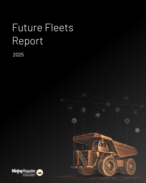Queensland Premier Anna Bligh officially opened MBD’s new research and development facility, which takes up 5000 square metres, at James Cook University today.
For every 100 tonnes of carbon dioxide fed into the plant MBD is aiming to produce 10,000 litres of oil and 25,000kg of algal meal.
The oil produced is similar to vegetable oil and is deemed suitable for plastics manufacturing and biodiesel.
MBD agri business manager Tony St Clair said the protein-rich algal meal could be used as a stock feed for cattle, sheep and pigs.
It could also be used for aquaculture, as fertiliser, or recycled a second time as an energy feedstock for the furnaces of an algal synthesiser-equipped power station.
The technology involves carbon dioxide being pumped into saline or brackish water then combined with other nutrients, such as animal waste.
A pure strain of algae is then placed into the system, with St Clair telling ILN the algae will chew up twice its body weight of carbon dioxide every 24 hours.
He said half of the algae would be harvested every day, with this algae then going through a dewatering and centrifugal process to produce the algae meal and oil.
“Using the naturally occurring process of synthesis to convert carbon into useful products has enormous potential for reducing emissions and enabling the continued use of coal as a sustainable energy source,” Anglo American metallurigical coal chief executive Seamus French said at the opening today.
“The technology could also offer a potential solution for our customers, such as power plants and steel smelters that have a single point for discharging carbon.”
French said Anglo was exploring biological ways to reduce the methane contained in underground mine ventilation air.
MBD first started with a 200-square-metre facility at JCU and has since secured project agreements to trial plants at the Tarong power station in Queensland, Earing power station in New South Wales and the Loy Yang power station in Victoria.
MBD is expected to shortly start construction of its commercial algal synthesiser at Tarong.
Bligh said it had the potential to expand to an 80-hectare demonstration plant in 2011, capable of producing 11 million litres of oil and 25,000t of stock feed for an investment of $25 million.
“If captured CO2 can be recycled to be permanently stored in plastics, or to make large volumes of transport fuel and low methane-emission stock feed for farm animals, as two years of successful trials at JCU now show, Australia and the world may be about to turn an important corner on being able to set and attain significant CO2 emissions reduction targets,” she said.
While Anglo is now a cornerstone investor in MBD, French said he was concerned the Carbon Pollution Reduction Scheme in its current form would hinder investments of this nature by forcing coal companies to purchase permits instead.
“Over the past five years Anglo American has invested more than $100 million on emissions abatement technologies, including two waste coal mine gas power stations that together reduce Anglo’s greenhouse gas emissions by 2.3 million tonnes annually,” he said.
MBD is an unlisted public company backed by private equity.























